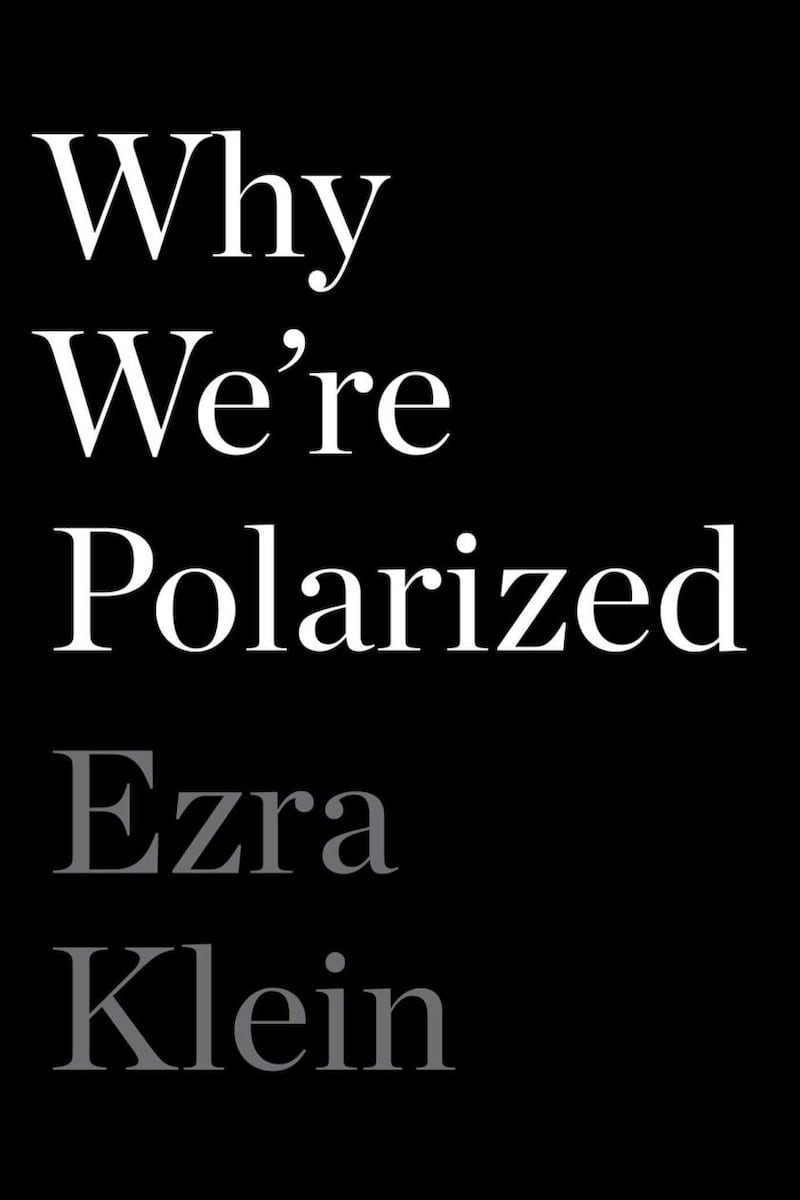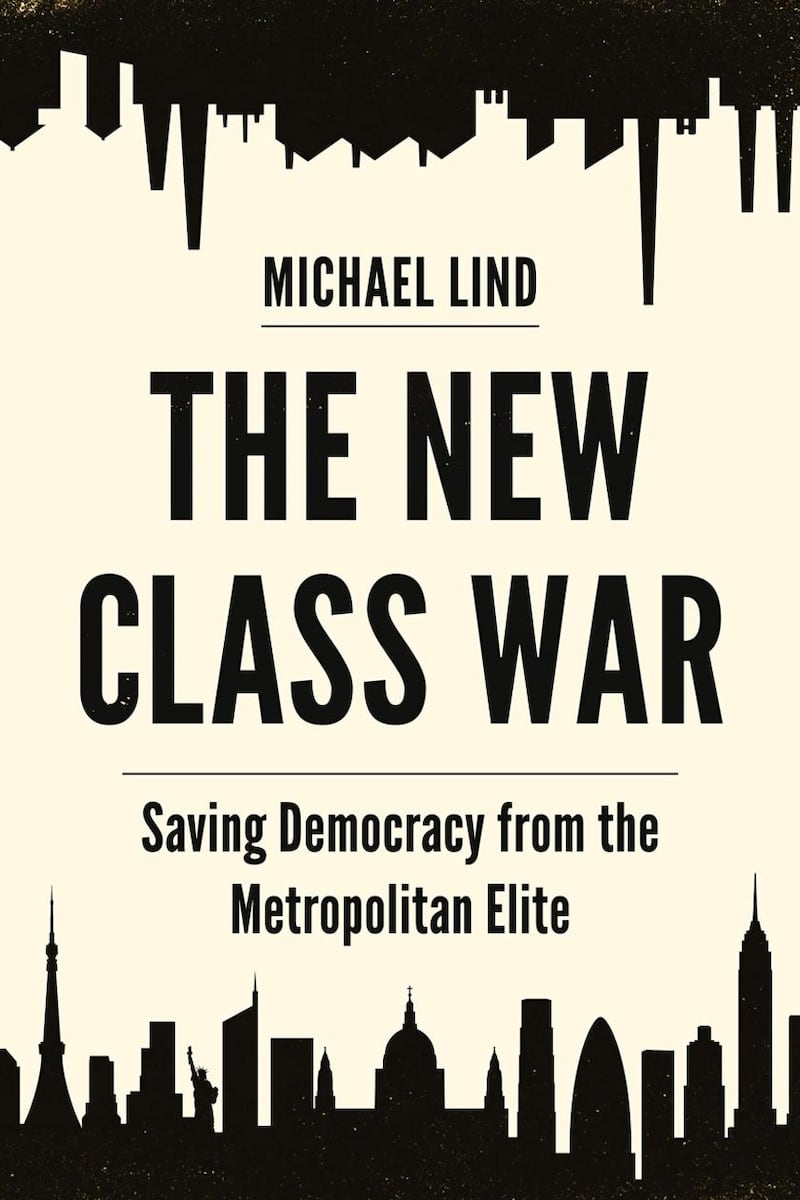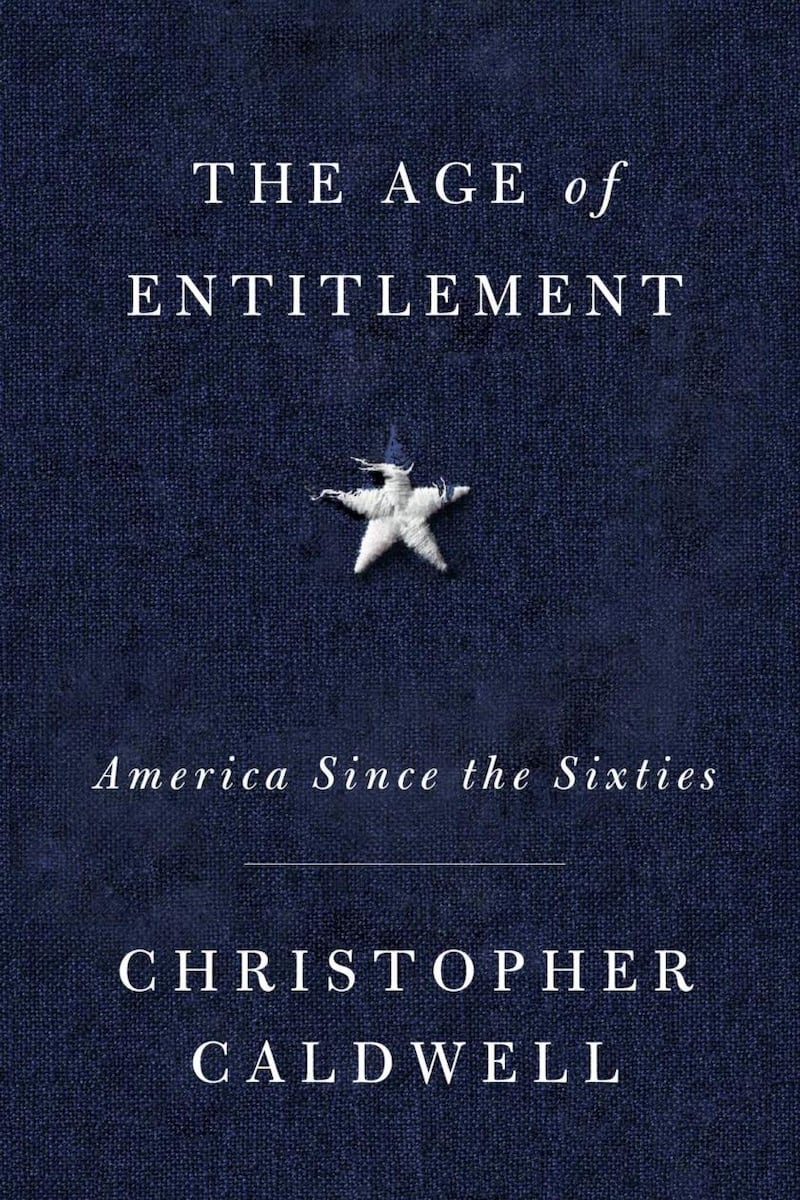In his traducement of norms, Donald Trump invites us to view him as an aberration. And there’s succour in this: the prospect of restored decorum after the orange comet sputters. But what if Trump is endogenous to America’s political system – a “rational actor” observing “the logic of polarisation?” This is altogether more inculpatory, not to mention disconcerting – waylaid by his ego, Trump has proved a poor demagogue; what if a competent one comes along?
"We collapse systemic problems into personalised narratives, and… cloud… understanding," writes Vox co-founder Ezra Klein. In Why We're Polarized he applies "systems thinking" to a US political firmament that selects for divisiveness. The result is riveting, revelatory, but also slippery – a specimen of the malaise it diagnoses.
Wasn’t US politics ever thus? Actually, Klein exhumes a be-careful-what-you-wish-for missive from the American Political Science Association in 1950 lamenting insufficient inter-party differentiation. If this deprived voters of meaningful choice, it also had merits. JFK deemed it a centripetal check on an otherwise divisive society, furnishing a “vital centre” wherein politicians could horse-trade and ideology wasn’t merely suspect but impractical.
But this isn’t an era we should feel nostalgia for towards making America collegial again. That comity was a sham, trampling on African Americans, subjugated under the ascendancy within the Democrats of southern conservative “Dixiecrats”.
“It’s not that American politics was not riven by sharp, even violent disagreement,” writes Klein, “it’s simply that these fights did not map cleanly onto party.” The Civil Rights Act brought them into alignment, cleaving the parties apart demographically and ideologically – southern conservatives finding common cause with “states’ rights”– proclaiming Republicans; African Americans flocking to the Democrats – toward today’s entities.

Abetting polarisation is a media market that skews incendiary in its quest for clicks, rewarding politicians who court controversy with coverage. Then there’s America’s “diffuse” distribution of power, hedged around with mechanisms to forestall the tyranny of any one governmental branch. These design in sclerotic dysfunction by furnishing the parties with tools to sabotage one other.
But there’s flesh-and-blood theory behind Klein’s technocratic analysis: “Identity is present in politics in the way gravity, evolution or cognition is present in politics.” Party affiliation has come to subsume a nexus of “identities,” he adds – race, gender, class, religion, locale, even consumer affinities.
Pejorative
This seems self-evident – perspective is relative to position. But “identity politics” is typically wielded as a pejorative, Klein notes, to delegitimise “the concerns of weaker groups….” Instead, he recasts identity as a source of light not heat, even, in its impetus toward authenticity, a beneficent force to be affirmed.
It figures an online media entrepreneur would find this appealing. It comports with a business model of aggregating demographic slivers across the internet’s long tail.
But another reading is that identity is one among many framing devices and fixation on it as an organising principle deleterious. Accenting politics as self-expression seems unlikely to better dispose us towards opponents and liable to ingrain our own partisanship. And one word you won’t find here is “narcissism”.
Also minimised is class. Like other brahmin analyses of Trump-era America, Why We’re Polarized flaunts a questing, empathic spirit of intellectual inquiry but comes over all incurious and gimlet-eyed before working-class populism, disposed of as race-tinged status anxiety. We’re informed with faux-academic gravitas that, “in a careful review of the literature” – like he didn’t merely consult sources and write up an article but conducted a meta-analysis – “Vox’s Zach Beauchamp” found that the common denominator of populist right parties is “hostility to immigration, particularly when the immigrants are nonwhite and Muslim”. There’s an oddly hermetic feel to this: Klein, the dispassionate wonk whose startup arrogates to itself the title, “the explanatory news publication,” floating above the fray, judiciously mediating the studies.
How convenient, would, I suspect, be Michael Lind’s rejoinder – “woke”-washing multinational corporations’ Wall Street-approved “labour arbitrage” – hiring unauthorised immigrants as easily-cowed shadow workers without the protections afforded domestic labour and obliged to toil at a steep discount to what these companies would otherwise have to pay. Let an idea be known by the interests it serves.
For Lind, the 2016 election opened up a transverse tear in America’s left-right political fabric between the working class and a professional-managerial “overclass” presiding over “technocratic neoliberalism,” a compound of “free market economic liberalism… and the cultural liberalism of the bohemian/academic left.”
The rupture was a long time coming, he writes in The New Class War, rooted in the dissolution of power-sharing between elites and masses. This compact had been enforced by the need for the former to conscript the latter in the event of "great power" conflagration and forestall their "radicalisation". But as these threats receded, the accommodation, with its demotic cacophony, messy redundancies and proclivity to produce buffoons as "tribunes" of the lower orders, began to seem ripe for rationalisation.
Moral legitimacy
The effects were no less dramatic for their lack of design: the ascendance of an order ministering to the exigencies of global capital, transplanting power from legislatures to elite conclaves in government agencies, courts and supra-national bodies, and drawing moral legitimacy from pieties on race and gender that, as constituted in policies (“class-neutral” affirmative action), avoid unduly subverting its smooth operation (or overclass status).
The final catalyst was the estrangement of leftist parties – in their embrace of urban elites – from traditional working-class constituents. In 2016, the masses played their last card: strength of numbers (strategically located in the upper Midwest thanks to the primacy of the electoral college in determining US elections).
This isn’t an apologia for Trump. Lind objects to his conflation with Hitler but otherwise considers him a mountebank.

Instead, he advocates a “democratic pluralism”, the cultivation of “mass-membership” organisations like unions and religious congregations as a salve for class conflict.
But – and here his proposal bares its teeth – this rests on “the fixed boundaries of a political community with a fixed membership” as a check on employers’ ability to “abrogate” their “contract” with workers by “transferring operations to foreign workers or bringing foreign workers into the country to weaken or replace organised labour”.
New Class War raises awkward questions. We hear much about the imperative to pare excess cost from the economy, but what about excess profit? If America is a classless society with race and gender the only impediments to social mobility, why are rich kids with low maths scores more likely to graduate from college than their higher-scoring but poorer peers? How do you square the idea of meritocracy with the wealthy gaming America’s eminently-gameable college admissions system? And if racism, rather than perceived competition for jobs and resources, exclusively explains their opposition to high immigration, why does “native working-class” hostility to immigrants not extend to “affluent and educated nonwhite immigrants”?
Even broaching these questions is to invite calumny and smear. Lind has written something actually discommoding to the rich and powerful, and at reputational risk to himself. That’s as good a definition as any of intellectual courage.
Rival constitutions
In The Age of Entitlement, American conservatism's foremost writer Christopher Caldwell offers an adjacent angle on the cleavage rending US society: a populace divided on first principles, subscribing to rival constitutions – the original one; and a charter that has come for many to supersede it, promulgated in the civil rights legislation of the 1960s and elaborated thereafter through legal fiat, privileging the rights of individual groups.
We’re all children of the 1960s, right? And this is generally accounted a good thing: we live in the light of the liberties they eked out or shone towards. But what of other legacies, corollaries of how these freedoms were secured? This is a heretical, unsettling work. It’s also irredeemably pessimistic – a narrative of American decline.
It rests on upending a classic US dichotomy: the “shining city on the hill” versus the benighted hordes, in Barack Obama’s formulation, “cling[ing] to guns and religion,” and worse. The tension between these poles is the dramatic engine in the customary narrative of America’s civil rights movement. This pageant (replete with soaring soliloquies and sleeves-furled protagonists, script by Aaron Sorkin) pits the best and brightest of the former – a “rainbow coalition” traversing Martin Luther King’s justice-bound “moral arc of history” toward expiating America’s original sin of slavery and sundering other marginalised groups from the bonds of oppression – against the lumpen latter.

Caldwell posits a less salutary counter-narrative to this Whiggish teleology, a thesis steeped in the cautions of his creed-unintended consequences, the limits to human sagacity, good intentions paving the road to hell, the perils of radically reaching beyond the will of the demos and the metastatic tendencies of bureaucracies.
He depicts a civil rights agenda peremptorily enacted by a grieving nation in memoriam of a slain president that, in its zeal to extirpate discrimination, invested the government with sweeping powers to interpose itself in the affairs of individuals and organisations.
Over time, in his telling, it ramified, through affirmative action, political correctness and high-handed legalistic methods, into a massive exercise in “consciousness-raising” and remediating injustice directed toward re-engineering US society “costing trillions upon trillions of dollars” and commensurate to “the peopling of the West… or any of the wars the country has fought.”
All for “Potemkin achievements”, he writes, and a legacy of disaffection among “problematised” working-class whites (inculcated into the same “racial consciousness,” actively fanning their racism) at whose economic expense it came and upon whom it foisted an insurgent constitution, instantiated in “positive discrimination” – sold as an “expedient” to redress historical injustice, but ossified under “diversity mandates” into a permanent regime of race preferences.
Unlovely history
Gainsaying the wisdom of civil rights has an unlovely history, exemplified in the weasel words “states’ rights” – at best, dickering about abstract principles in the face of injustice; at worst, a legalistic redoubt for bigotry. Caldwell doesn’t get into counter-factuals, but the road not taken is presumably the solvent of gradualism-attritional Father Time.
This crystallises a weak link in his analysis: a failure to nail down what confronted 1960s lawmakers. He characterises Jim Crow as, variously, a particularistic phenomenon rooted in “regional folkways” liable to yield to forces – the South’s integration into the rest of America – already under way, and “a system of racial oppression so intricate and ingenious it had taken three-and-a-half centuries to devise.” Which is it to be? This seems consequential.
But Caldwell’s scepticism of the social justice project yields an alternative set of optics to America’s recent history that – like them or not – illuminate its political fault-lines.
Consider the rarefied socioeconomic altitude of the pretext for the test case deemed a catalyst for the Supreme Court’s 2015 legalisation of gay marriage. Just 0.2 per cent of the population could identify with the financial predicament of Edith Windsor, on the hook for $363,000 in estate tax following the death of her partner because US law didn’t recognise their union. But it wasn’t the court of public opinion that mattered.
“Edie did not live differently in relationship to many of the judges and those were the only people we needed to persuade,” remarked lawyer Roberta Kaplan. And behold the attendant right-side-of-history elite love-in: NPR’s Nina Totenberg helping select Kaplan’s courtroom outfit; the New Yorker’s Ariel Levy shedding “tears of joy” at the verdict.
Contrast this with resounding lack of media interest – before Trump picked up on it – in the opioid crisis killing, by 2016, 20 Americans per 100,000 (50 in West Virginia), whose “suburban and rural white [victims] were not protagonists of the nation’s official moral narrative,” writes Caldwell.
And what about the despoiled backdrop to this “American carnage”? “In 1975, rural America…meant banjos, bait shops, and cornbread. By 2016, it meant SNAP cards, internet pornography, and OxyContin.”
A rationale for civil rights legal hardball is that through sovereign action public opinion “evolves”. This seems borne out by a 2015 poll finding 58 per cent support for gay marriage, reversing Americans’ previous opposition. But Caldwell cautions against mistaking submission for approval.
“By…2016, Americans would be so scared to speak their mind on matters even tangential to civil rights that their political mood was essentially unreadable,” he writes. The upshot: that November, in the privacy of the polling booth, a “working majority” confounded the collective intellectual wattage of the nation’s punditocracy.















